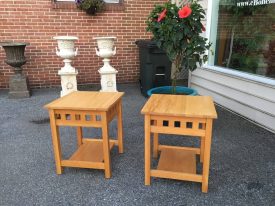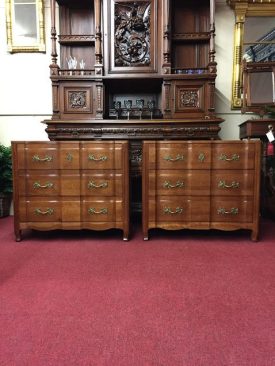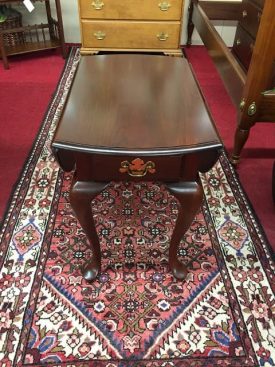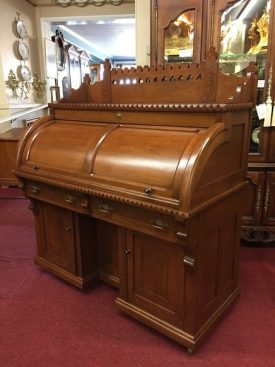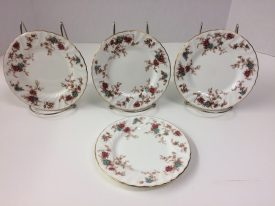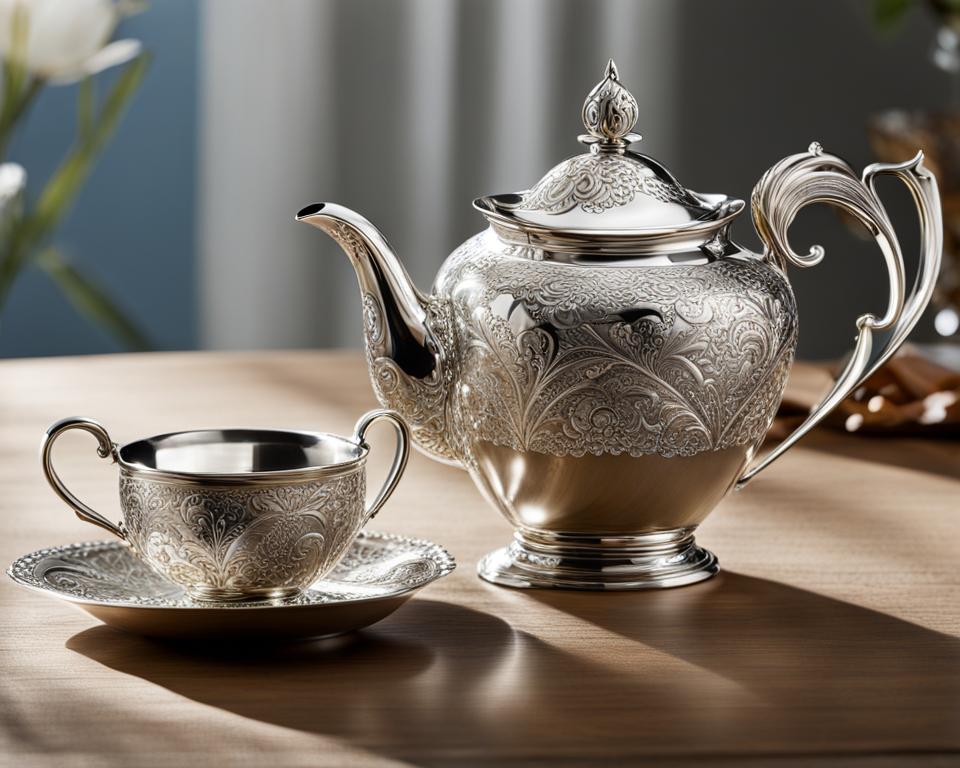Antique beds add romance and luxury to an otherwise non-descript bedroom. Of course, when you think of an antique bed, a large imposing Victorian bed may spring to mind.
Or, you may think of a carved poster bed with canopy and rope ties. Finally, antique brass beds with springs that you may have seen at your grandmother’s house might pop in your head.
There are so many different styles and types of antique beds to consider! So let’s dive into an overview on this fascinating subject.
Antique Bed History
The earliest beds in Colonial America were often very simple in design. However, as time went on, elaborate bed forms developed and took the place of the rather primitive designs.
Antique rope beds were often made of thick posts with knobs along the side rails and head and footboard. The knobs served as posts to which thick rope was weaved and tied, forming an almost hammock-like support for a mattress of hay, straw or stuffed wool.
Of course, the most prevalent bed design for the wealthy was the four poster bed. The four poster bed often had a secondary function besides warmth and comfort. Elaborate carvings and heavy draperies, often of embroidered and woven silks and fine fabrics, denoted wealth and class for the fine early colonial and Post-Colonial homes.
Regional differences show great artistic variety in early poster beds. Often New England beds show simple turned columns terminating in cannonball posts. Sometimes, the curly maple wood and cherry of New England provided the decoration on early beds. Other times, paint decorations and folk art decorated New England beds.
In sophisticated southern beds, motifs like the rice carved poster and pineapple poster came during the late 18th and early 19th century. Charleston beds became stylish and regal looking, often made of imported cuban mahogany.
In Philadelphia, craftsman also sought to impress with acanthus carved poster beds, or stately reeded poster beds.
Antique Sleigh Beds
The Antique sleigh bed form came to America and was initially an adaptation of a French empire style, “lit-en-bateau.”
Sumptuous mahogany, often decorated with brass ormolu and paw feet, made up these exquisite antique sleigh beds. While rare to find, we can see that the antique sleigh bed had a lot of influence on 20th and 21st century beds, as this regal style doesn’t show any signs of waning.
Victorian Beds
During the late 19th century, artisans and craftsman took cues from the Renaissance and Gothic Periods and built grand, imposing beds. Most Victorian beds have tall headboards that feature elaborate carvings.
Often, these carvings have open fretwork designs that extend from the posts or center headboard pinnacle. Of course, antique Victorian beds aimed for drama!
The “Half-tester” bed was also one that found its way to Victorian mansions. These elaborate beds mimicked the canopy style of early colonial beds. However, the ceiling of the canopy didn’t extend over the entire bed, but simply over the front half of the bed. (Hence the name “half-tester.”) This extravagant version of an antique bed surely brought about sweet dreams for the lucky owners!
Antique Brass Beds
Antique brass beds rolled around in America in the mid 19th century and became an immediate hit. The sturdy brass, gleaming when brand new, and simple designs appealed to many Americans. The best examples often had delicate scrollwork, handsome cannonballs and unique designs.
Finding an antique brass bed in great condition today can prove tough. Many have tarnished over the years, or have missing or damaged parts. They may prove difficult to repair or fix, and many tend to run in small sizes. However, if you have an antique brass bed in great shape, cherish it! It may have some value if kept in good condition.
20th Century Beds
As the 20th century rolled around, French style beds resurfaced in the forms of art nouveau and art deco styles, creating a softer look in the bedroom.
Many beds in the early 1900’s through 1920’s featured delicate inlaid designs and curved footboards. You may see satinwood and rosewood inlaid in mahogany beds. Sometimes caning decorates sections of the headboards and curved footboards of this period. Often, other pieces like antique dressing tables or antique dressers match the antique beds of this period.
Delicate carvings sometimes top the footboard and headboard. Overall, the look of early 20th century beds is less ostentatious than earlier periods. Nonetheless, these antique beds from this period captured pure femininity and softness.
Considerations of Antique Beds
While certainly antique beds of all eras have great style and charm, there exists a few potential issues to be weary of.
Firstly, most antique beds have odd dimensions. Before the age of standard mattresses (and King and Queen sizes), you may find beds with unusual dimensions. Often, in the antique world, you will hear the term “three-quarters bed.” Slightly larger than a twin, but often not as long as a full or double, three quarters beds have a size of around 50” wide by 70” long. (A standard full generally measures 54” wide by 74” long).
Thus, you are left with a few choices: purchase a custom sized mattress from a manufacturer or try to adapt the bed frame to a larger mattress. Some people even settle for just the headboard, and use it with a more modern frame. Also, you could consider an antique bed converter kit or employ a carpenter to fashion something for you.
Another thing to consider with an antique bedframe is how sturdy and strong it appears. With much use and weight of a mattress over the years, antique beds can develop lose joints. So make sure you inspect all parts of your antique bed before purchasing. If the shop does not have the bed assembled, there could be a reason!
So there you have it! A very brief overview of antique beds Hopefully it gives you a starting point as you shop for your perfect bed.

